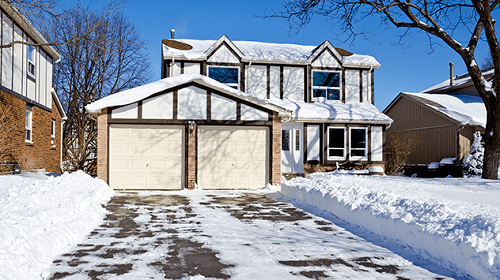A Concise Guide to Protecting Your Property from Cold Weather

Depending entirely on where you live in the country, you will naturally experience different sets of weather from your friends and family members in other states.
If you reside in a location whereby you are often subjected to particularly cold weather, thunderstorms, and even heavy snowfall, you will want to protect your property as much as you possibly can from the differing elements.
With this in mind, continue reading to discover a concise guide to protecting your property from cold weather.
Install Storm Windows
One of the most powerful defenses against bad weather and freezing cold conditions is that of storm windows, which not only protect your property from all kinds of weather but also make your home considerably more energy efficient and environmentally friendly.
Storm windows also act as retainers of heat and barriers to dampness and moisture, as soundproofing tools, and look after the glazing and seals on your existing windows. Additionally, storm windows also make your home feel more comfortable as they are incredibly effective in reducing air movement through the window frames.
Protect Your Pipes
Everyone knows that one of the most expensive, and not to mention, in some cases, genuinely traumatic things that can happen to a private property is that the pipes become cold, rusted, and brittle and then burst.
To prevent this from happening, ensure you run both hot and cold water through your plumbing system regularly, open the cabinet doors to expose the pipes to the warmer air inside the home, seal any leaks you can detect, and make sure all outside hoses and faucets are sealed too.
In addition, you should also look into installing a smart WiFi thermostat, which will enable you to accurately assess the temperature and control it when you are away from home.
Book Boiler Maintenance
The third and final tip, which is perhaps the best way of them all to properly protect your property from extreme weather, is to make sure that your boiler is regularly serviced by a professional and, just as vitally, maintained by yourself.
Fortunately, there are some simple steps involved in maintaining your boiler, the first being to check the boiler’s pressure gauge to confirm that it is sitting firmly within the correct levels, which is usually between one and two bars of pressure.
Every year, at the minimum, you should bleed each and every one of your radiators throughout your home. While doing so, you should check if the radiator is getting warm throughout the appliance and not just at the top or bottom when the heating is switched on.
A properly functioning boiler should show a blue, strong flame. If the color is more yellow or orange in tone, this could be a sign of a potential carbon monoxide leak, and you should contact a professional immediately.
Finally, inspect the external pipe running from the back of the boiler for any drips or leaks.




